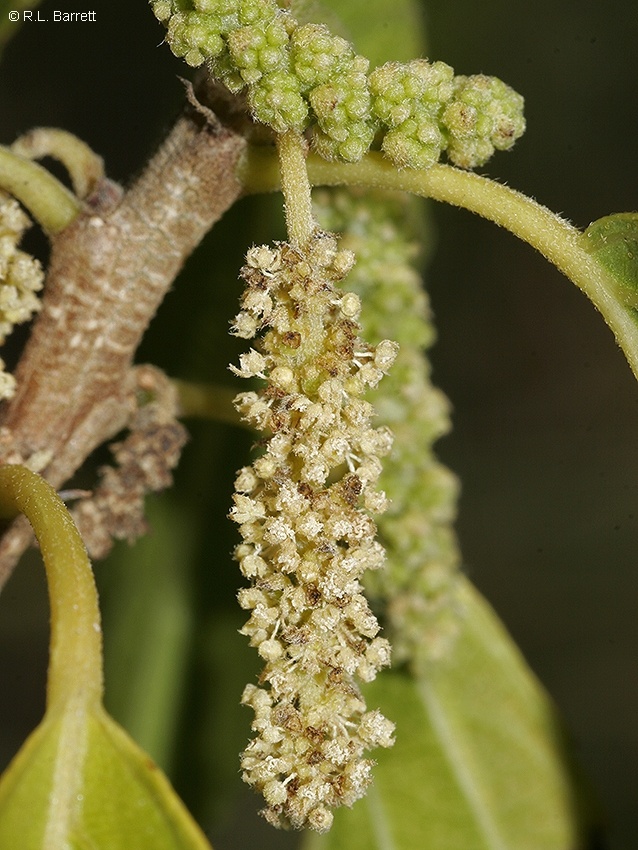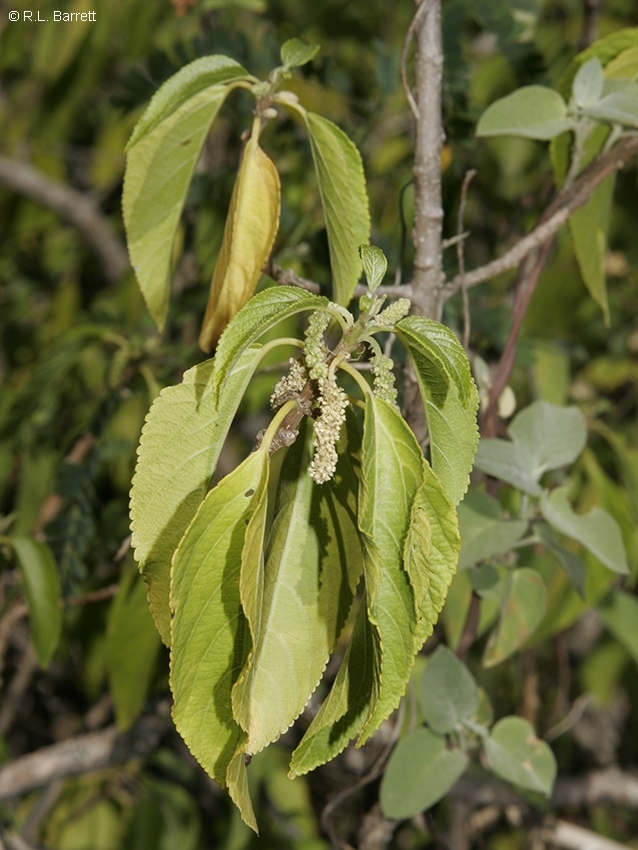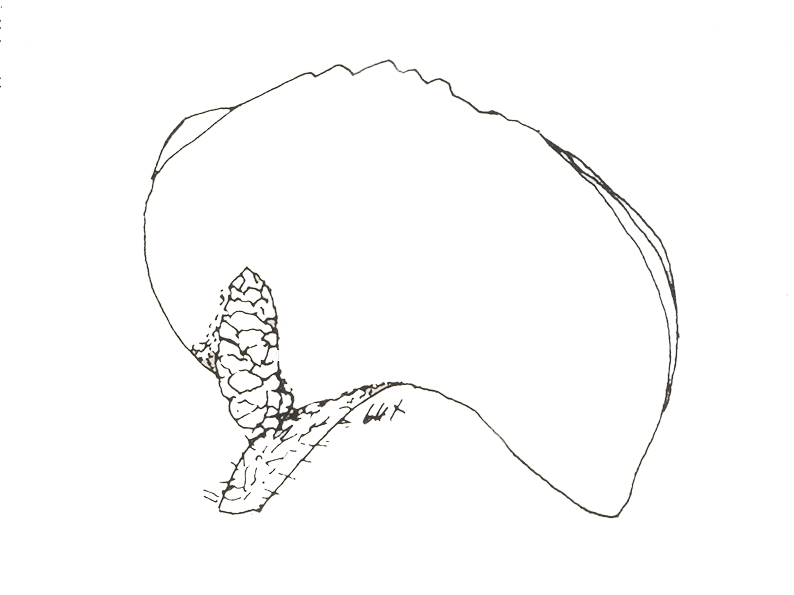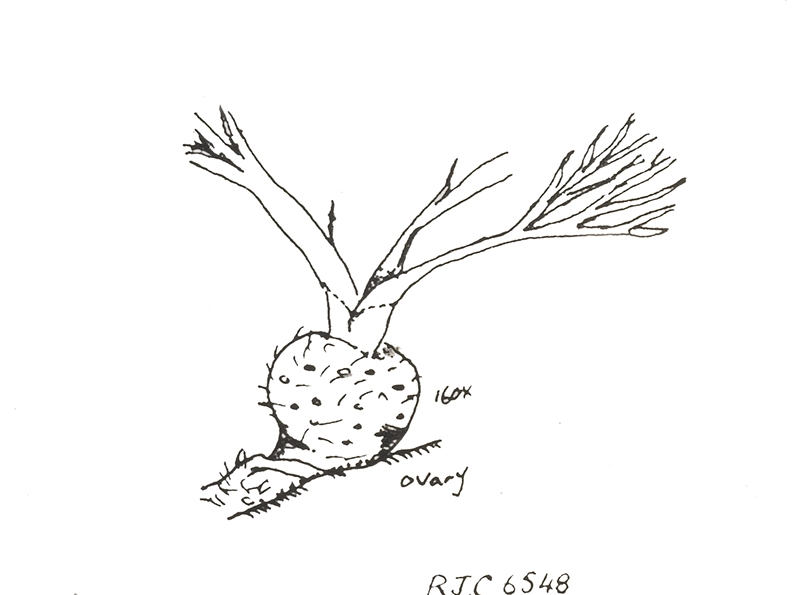Australian Tropical Rainforest Plants - Online edition
Acalypha pubiflora subsp. australica Radcl.-Sm.









Radcliffe-Smith, A. (1990) Kew Bulletin 45(4): 678. Type: "W.A.: 1km SE of Yammera Gap, SW side of Napier Range [Kimberley Region], 17°22'S, 124°49'E,26 April 1988. Cranfield 6548 (holotype PERTH, isotype K)."
Shrub, 1-6 m tall. Branches reddish with white lenticels. Stems minutely hairy with simple recurved hairs, and also longer hairs to 3 mm long.
Leaves spirally arranged, ovate to narrowly ovate; 3-11.5 x 1.4-5 cm, pale to bright green with numerous yellow oil glands on the undersurface; margin crenate; apex acuminate, base obtuse.
Inflorescences axillary. Female flowers 1-2 per spike; male flowers in many-flowered spikes. Female bracts broadly ovate and folded to enclose two flowers. Female flowers: floral segments 3, ovary with sparse hairs and glands, style laciniate (divided into irregular segments). Male flowers in long spikes, very small, whitish.
Female bracts 1.4 x 0.8 cm in fruit. Fruit c. 3 mm in diameter, 3-lobed, gland-dotted, held in the enlarged bracts.
Features not available.
Description from 'Flora of the Kimberley Region', and the 'Flora of Zimbabwe' online.
3659





